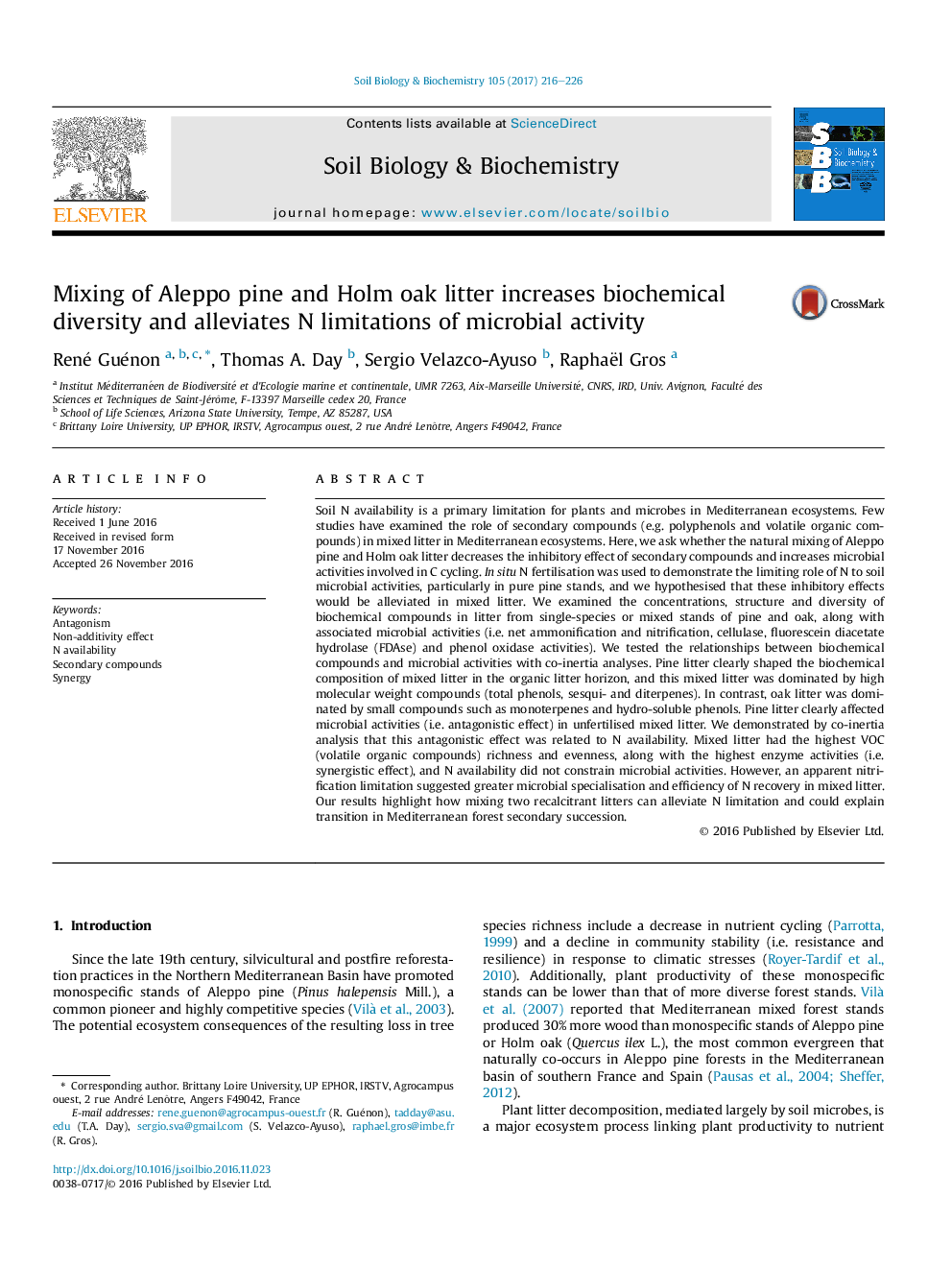| Article ID | Journal | Published Year | Pages | File Type |
|---|---|---|---|---|
| 5516517 | Soil Biology and Biochemistry | 2017 | 11 Pages |
Abstract
Soil N availability is a primary limitation for plants and microbes in Mediterranean ecosystems. Few studies have examined the role of secondary compounds (e.g. polyphenols and volatile organic compounds) in mixed litter in Mediterranean ecosystems. Here, we ask whether the natural mixing of Aleppo pine and Holm oak litter decreases the inhibitory effect of secondary compounds and increases microbial activities involved in C cycling. In situ N fertilisation was used to demonstrate the limiting role of N to soil microbial activities, particularly in pure pine stands, and we hypothesised that these inhibitory effects would be alleviated in mixed litter. We examined the concentrations, structure and diversity of biochemical compounds in litter from single-species or mixed stands of pine and oak, along with associated microbial activities (i.e. net ammonification and nitrification, cellulase, fluorescein diacetate hydrolase (FDAse) and phenol oxidase activities). We tested the relationships between biochemical compounds and microbial activities with co-inertia analyses. Pine litter clearly shaped the biochemical composition of mixed litter in the organic litter horizon, and this mixed litter was dominated by high molecular weight compounds (total phenols, sesqui- and diterpenes). In contrast, oak litter was dominated by small compounds such as monoterpenes and hydro-soluble phenols. Pine litter clearly affected microbial activities (i.e. antagonistic effect) in unfertilised mixed litter. We demonstrated by co-inertia analysis that this antagonistic effect was related to N availability. Mixed litter had the highest VOC (volatile organic compounds) richness and evenness, along with the highest enzyme activities (i.e. synergistic effect), and N availability did not constrain microbial activities. However, an apparent nitrification limitation suggested greater microbial specialisation and efficiency of N recovery in mixed litter. Our results highlight how mixing two recalcitrant litters can alleviate N limitation and could explain transition in Mediterranean forest secondary succession.
Related Topics
Life Sciences
Agricultural and Biological Sciences
Soil Science
Authors
René Guénon, Thomas A. Day, Sergio Velazco-Ayuso, Raphaël Gros,
